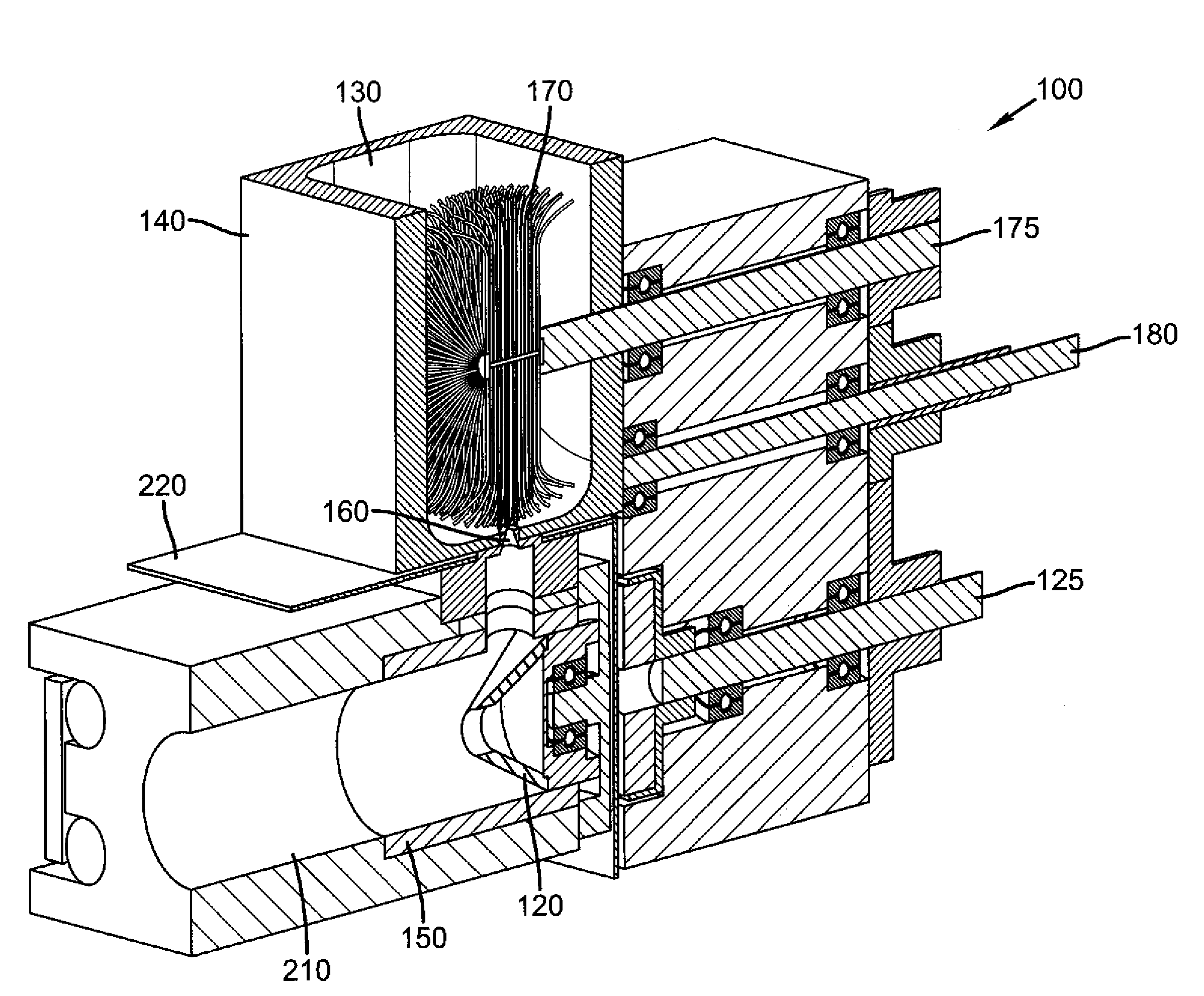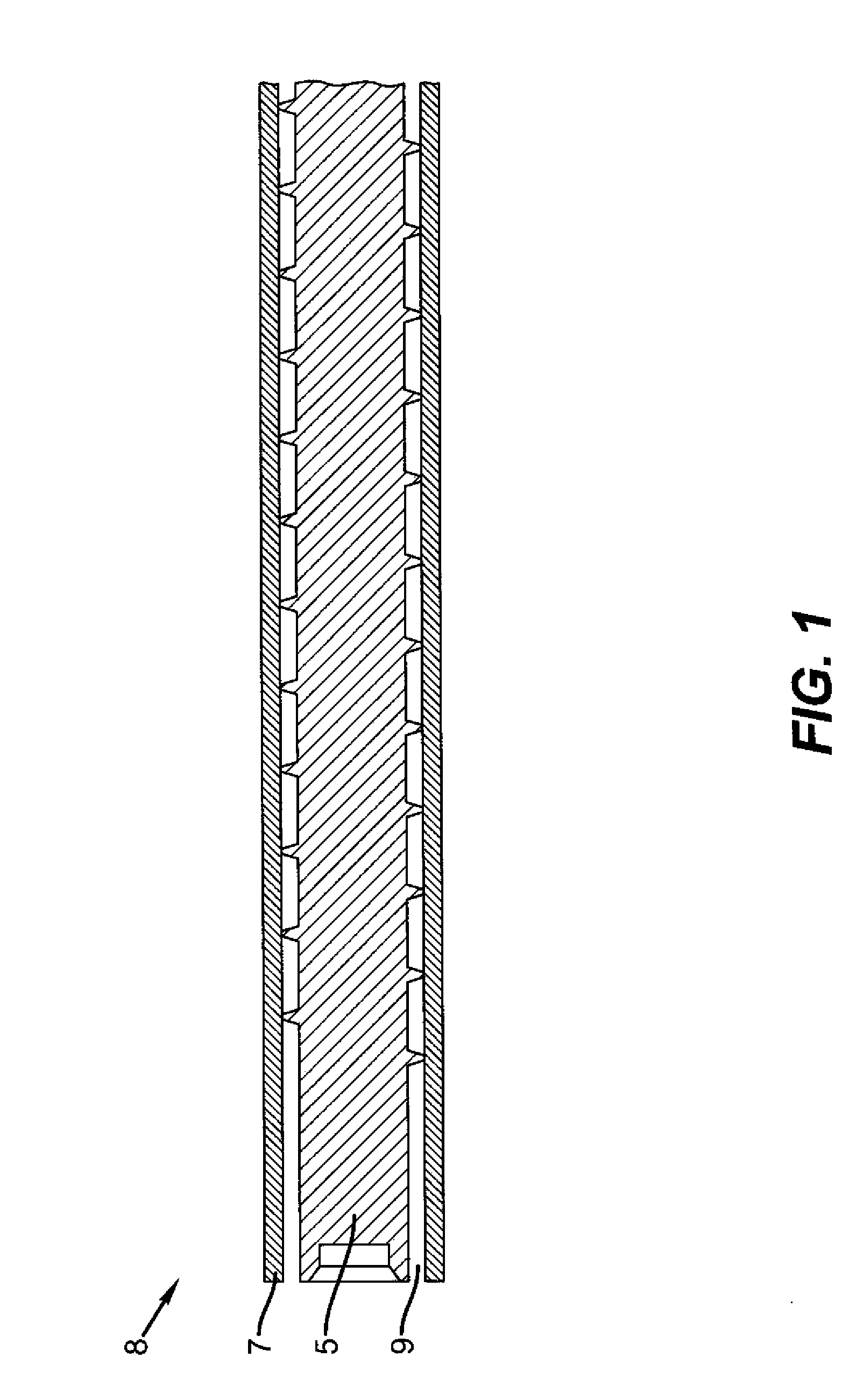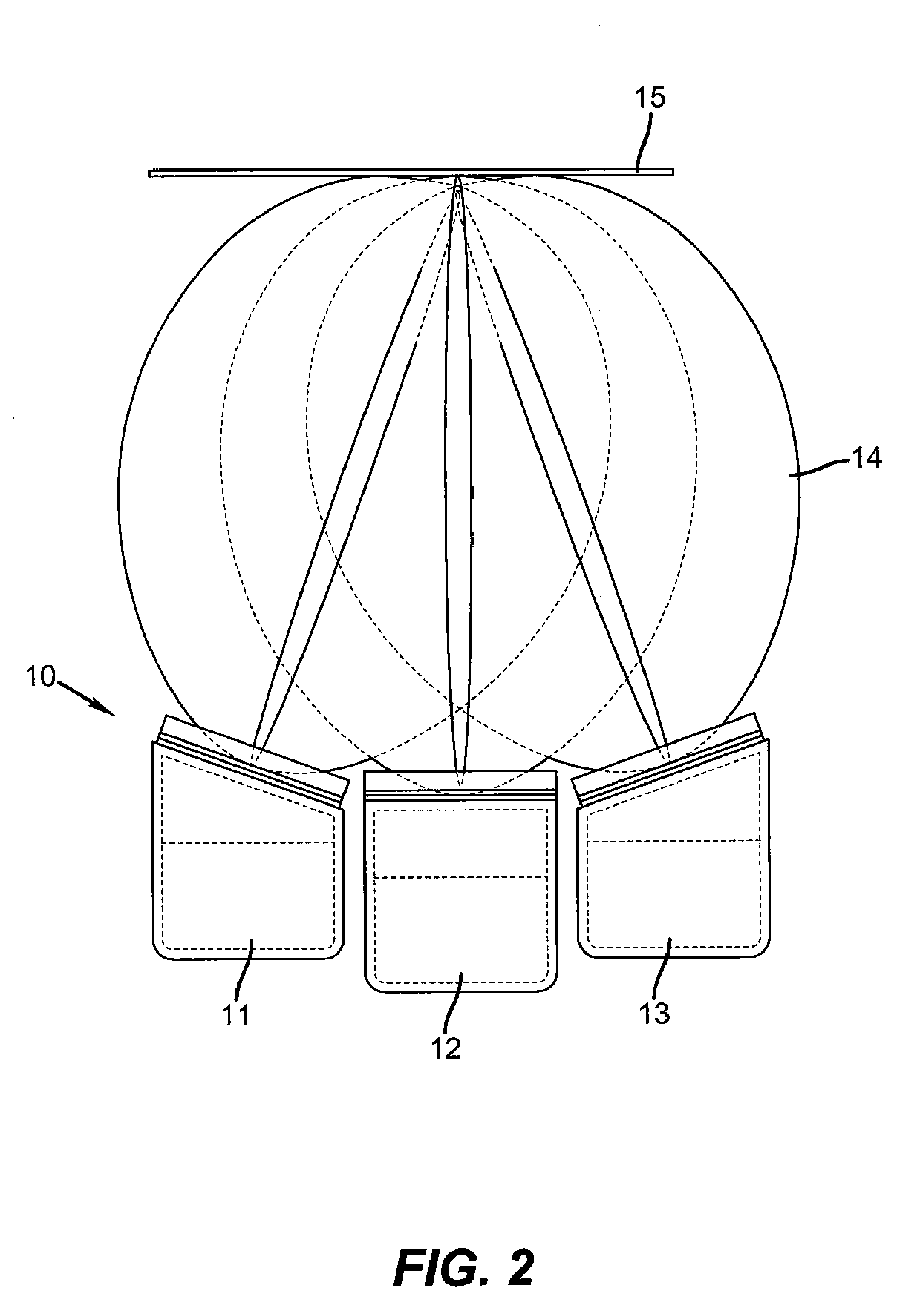Simplified powder feeding and vaporization apparatus
a powder feeding and vaporization apparatus technology, applied in vacuum evaporation coatings, chemical vapor deposition coatings, coatings, etc., can solve the problems of increasing the difficulty of precise metering of small amounts of powdered materials, and the use of additives. achieve the effect of reducing the risk of degrading, reducing the risk of contamination, and increasing the vaporization ra
- Summary
- Abstract
- Description
- Claims
- Application Information
AI Technical Summary
Benefits of technology
Problems solved by technology
Method used
Image
Examples
Embodiment Construction
[0033]Turning now to FIG. 3, there is shown a three-dimensional cross-sectional view of one embodiment of an apparatus according to the present invention. Vaporizing apparatus 100 is an apparatus for vaporizing particulate material. Vaporizing apparatus 100 includes a metering apparatus, which includes a housing having a reservoir for receiving particulate material, an opening in the reservoir for discharging the material into a vaporizing chamber, and a rotatable wire brush wheel disposed in the reservoir. These components will be described in more detail. Reservoir 130 is in housing 140 and is for receiving particulate material. The particulate material can include a single component, or can include two or more different material components, each one having a different vaporization temperature. Although not shown, reservoir 130 can include a larger storage and feeding apparatus above it to increase the volume of particulate material that can be loaded. Such containers and feeding ...
PUM
| Property | Measurement | Unit |
|---|---|---|
| weight accuracy | aaaaa | aaaaa |
| particle size | aaaaa | aaaaa |
| length | aaaaa | aaaaa |
Abstract
Description
Claims
Application Information
 Login to View More
Login to View More - R&D
- Intellectual Property
- Life Sciences
- Materials
- Tech Scout
- Unparalleled Data Quality
- Higher Quality Content
- 60% Fewer Hallucinations
Browse by: Latest US Patents, China's latest patents, Technical Efficacy Thesaurus, Application Domain, Technology Topic, Popular Technical Reports.
© 2025 PatSnap. All rights reserved.Legal|Privacy policy|Modern Slavery Act Transparency Statement|Sitemap|About US| Contact US: help@patsnap.com



